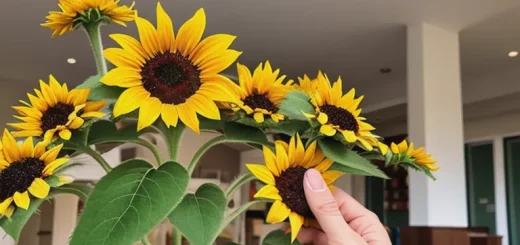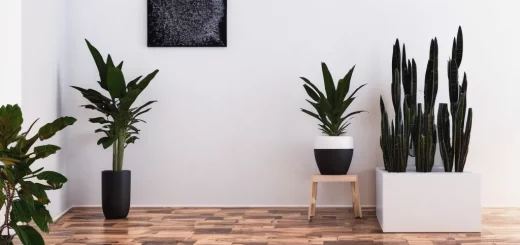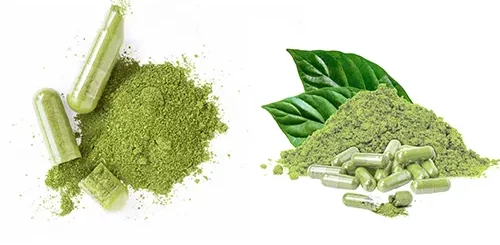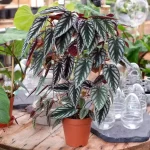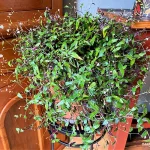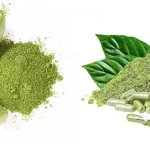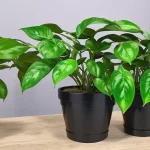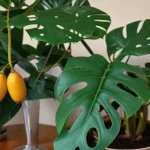The Best Indoor Plants That Don’t Need Sun

Table of Contents
Introduction to Indoor Plants That Don’t Need Sun
In the hustle and bustle of modern life, indoor plants serve as a breath of fresh air, quite literally. They not only add a touch of nature to our living spaces but also play a pivotal role in enhancing our well-being. From purifying the air to boosting our mood, the benefits of indoor plants are manifold. However, not every home or office is blessed with abundant sunlight. Many individuals find themselves in spaces with limited natural light, be it due to architectural designs, the direction their windows face, or simply residing in densely populated urban areas where buildings block out the sun.
This poses a challenge. How does one maintain a green sanctuary when sunlight, a critical component for plant growth, is in short supply? The answer lies in choosing the right plants – those that thrive even in low-light conditions.
The Importance of Light for Plants
Every plant enthusiast knows that light is a fundamental ingredient for plant growth. But why is it so crucial?
- Photosynthesis and its Role: At the heart of a plant’s relationship with light is the process of photosynthesis. This is where the magic happens. In the presence of light, plants convert carbon dioxide and water into glucose, their primary source of energy. This process not only fuels their growth but also releases oxygen, which is essential for our survival. Without adequate light, photosynthesis is hindered, leading to stunted growth or even the death of the plant.
- Different Light Requirements for Different Plants: Just as humans have varied dietary needs, plants too have diverse light requirements. Some plants, like cacti and succulents, thrive in bright, direct sunlight, basking in its intensity for hours. On the other hand, certain ferns and ivies prefer the dappled light of a forest floor, shielded from the sun’s full force. Recognizing and catering to these specific needs is key to ensuring that each plant flourishes in its chosen environment.
Benefits of Low-Light Plants
- Suitability for Spaces with Limited Natural Light: One of the most evident advantages of low-light plants is their adaptability to spaces that don’t receive ample sunlight. Whether it’s a basement apartment, an office with few windows, or a room facing the north, these plants can thrive and bring life to otherwise dim areas.
- Low Maintenance for Beginners: For those new to the world of plant care, low-light plants can be a blessing. Their resilience to less-than-ideal light conditions often means they require less attention and care than their sun-loving counterparts. This makes them perfect for beginners looking to dip their toes into gardening without the fear of immediate failure.
- Air Purification Qualities: Many low-light plants are renowned for their ability to purify the air. They can absorb toxins and pollutants, improving indoor air quality. This not only creates a healthier living environment but also contributes to better mental well-being and productivity.
List of Indoor Plants That Don’t Need Much Sun
Snake Plant (Sansevieria) The Snake Plant, with its tall, upright variegated leaves, is not only a stylish addition to any interior but also one of the most resilient plants. It’s known to survive in low light and even handle some neglect.
Care Instructions: Water sparingly, allowing the soil to dry out between watering. It prefers well-draining soil and can tolerate a range of light conditions, from low light to direct sunlight.
ZZ Plant (Zamioculcas zamiifolia) The ZZ Plant boasts glossy, dark green leaves that can add a touch of elegance to any space. It’s incredibly hardy and can withstand periods of neglect.
Care Instructions: Water when the top layer of soil feels dry. It’s adaptable to various light conditions but thrives best in indirect light.
Pothos (Epipremnum aureum) Pothos, with its heart-shaped leaves and trailing vines, is a popular choice for hanging baskets. It’s versatile and can adapt to a variety of environments.
Care Instructions: Water when the soil feels dry to the touch. While it can tolerate low light, it prefers bright, indirect light.
Peace Lily (Spathiphyllum) The Peace Lily is not only beautiful, with its white blooms and dark green foliage, but it’s also known for its air-purifying qualities.
Care Instructions: Keep the soil consistently moist but not soggy. It thrives in indirect light but can adapt to low-light conditions.
Spider Plant (Chlorophytum comosum) The Spider Plant is characterized by its arching green and white striped leaves. It’s easy to care for and can even produce “spiderettes” or baby plants.
Care Instructions: Water moderately, allowing the topsoil to dry out between watering. It prefers bright, indirect light but can tolerate low light.
Cast Iron Plant (Aspidistra elatior) True to its name, the Cast Iron Plant is tough and nearly indestructible. It has long, dark green leaves that grow upright, making it a great floor plant.
Care Instructions: Water sparingly and ensure the soil drains well. It’s highly adaptable and can thrive in low to moderate light conditions.
Maidenhair Fern (Adiantum) The Maidenhair Fern is delicate with feathery, light green fronds. It adds a touch of softness and elegance to any space.
Care Instructions: Keep the soil consistently moist, and ensure it’s placed in a location with high humidity. Prefers indirect light but can manage in low-light areas.
Dracaena (Dracaena spp.) Dracaenas are versatile and come in various types, with leaves ranging from green to red to multicolored. They can grow quite tall, making them suitable as statement pieces.
Care Instructions: Water when the top layer of soil is dry. They can adapt to a range of light conditions, from low to bright indirect light.
Philodendron (Philodendron spp.) Philodendrons are popular for their heart-shaped leaves and trailing or climbing habits. They’re perfect for shelves or as hanging plants.
Care Instructions: Water when the top inch of soil feels dry. They prefer bright, indirect light but can tolerate low-light conditions.
Lucky Bamboo (Dracaena sanderiana) Despite its name, Lucky Bamboo isn’t bamboo at all. It’s an easy-to-care-for plant that can grow in water or soil and is often associated with good fortune.
Care Instructions: If grown in water, change the water every two weeks. If in soil, water when the top layer feels dry. It thrives in indirect light but can manage in low light.
Tips for Caring for Low-Light Plants
- Watering Recommendations: While each plant has its unique watering needs, a general rule for low-light plants is to water less frequently. Since they receive less light, they use water at a slower rate. Always check the soil’s moisture level before watering. A good practice is to water when the top inch or two of soil feels dry to the touch.
- Soil and Potting Advice: Low-light plants typically prefer well-draining soil to prevent root rot. Consider using a potting mix designed for indoor plants, and always ensure your pots have drainage holes. Repot your plants every couple of years or when they outgrow their current container.
- Signs of Too Much or Too Little Light: Plants communicate their needs through their leaves. If they’re receiving too much light, their leaves might turn yellow or look scorched. On the other hand, if they’re not getting enough light, they might become leggy, with long stems and fewer leaves. Adjust their position based on these signs.
- Fertilizing and Feeding: Low-light plants generally require less fertilizer than plants in brighter conditions. Feed them with a balanced, water-soluble fertilizer every 6-8 weeks during their growing season (typically spring and summer). Always follow the product’s recommended dosage.
Common Mistakes to Avoid
- Overwatering: This is the most common cause of death for indoor plants. Always ensure your pots have drainage holes and let the soil dry out between watering.
- Placing Them in Complete Darkness: While these plants can tolerate low light, they still need some light to survive. Avoid placing them in areas with no light at all, such as windowless rooms or dark corners.
- Not Monitoring for Pests: Even the hardiest plants can fall victim to pests like spider mites or aphids. Regularly inspect your plants, especially the undersides of leaves, and take action at the first sign of an infestation.
Conclusion
Low-light plants offer a unique opportunity to greenify spaces that might seem challenging for plant growth. Their resilience and adaptability make them perfect companions for both seasoned plant enthusiasts and beginners. By understanding their needs and providing the right care, you can enjoy a lush, green oasis even in the dimmest corners of your home. So, why wait? Dive into the world of low-light plants and let them transform your space into a serene sanctuary.
FAQs: Low-Light Indoor Plants
- Q1: Can low-light plants survive without any light at all? A: No, all plants require some amount of light to perform photosynthesis. “Low-light” simply means they can thrive in less direct or intense light compared to other plants. They still need some form of ambient light to grow.
- Q2: How do I know if my plant is getting too much light? A: Signs of too much light can include leaves turning yellow, brown spots, or a scorched appearance. If you notice these signs, consider moving your plant to a location with less direct light.
- Q3: How often should I water my low-light plants? A: The frequency of watering depends on the specific plant and the conditions of your home. However, a general rule is to water when the top inch or two of soil feels dry. Overwatering is a common mistake, so it’s essential to check the soil’s moisture level before watering.
- Q4: Do low-light plants need fertilizer? A: Yes, like all plants, low-light plants benefit from fertilization, but they typically require it less often. A balanced, water-soluble fertilizer every 6-8 weeks during the growing season should suffice.
- Q5: Can I move my low-light plant to a brighter spot occasionally? A: Yes, you can. However, it’s essential to do so gradually. Sudden changes in light conditions can stress the plant. If you want to move it to a brighter spot, do so incrementally over several days.
- Q6: Are low-light plants safe for pets? A: Some low-light plants, like the Peace Lily, can be toxic to pets if ingested. Always research a plant’s safety before bringing it into a home with pets and consider placing potentially harmful plants out of reach.
